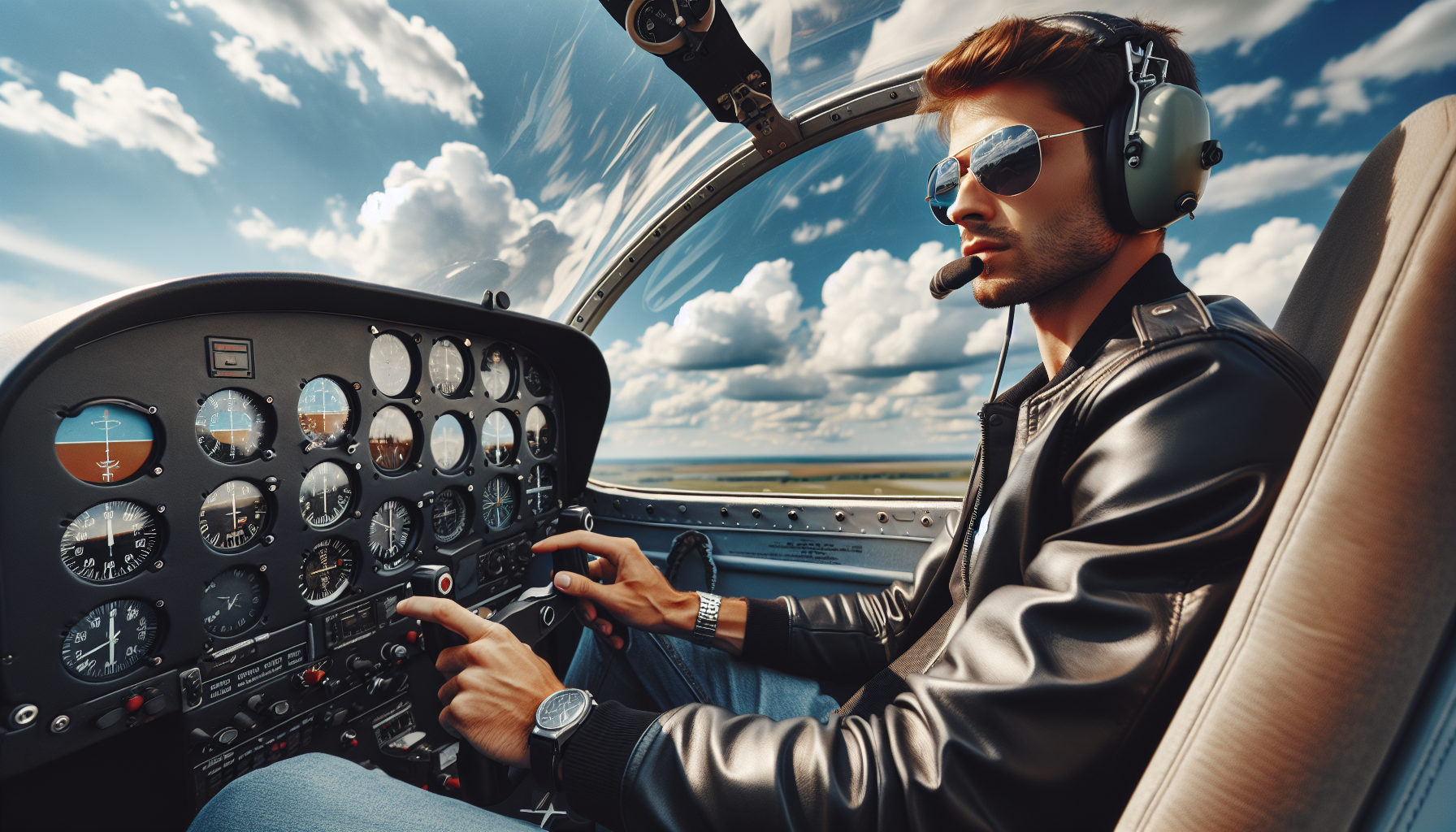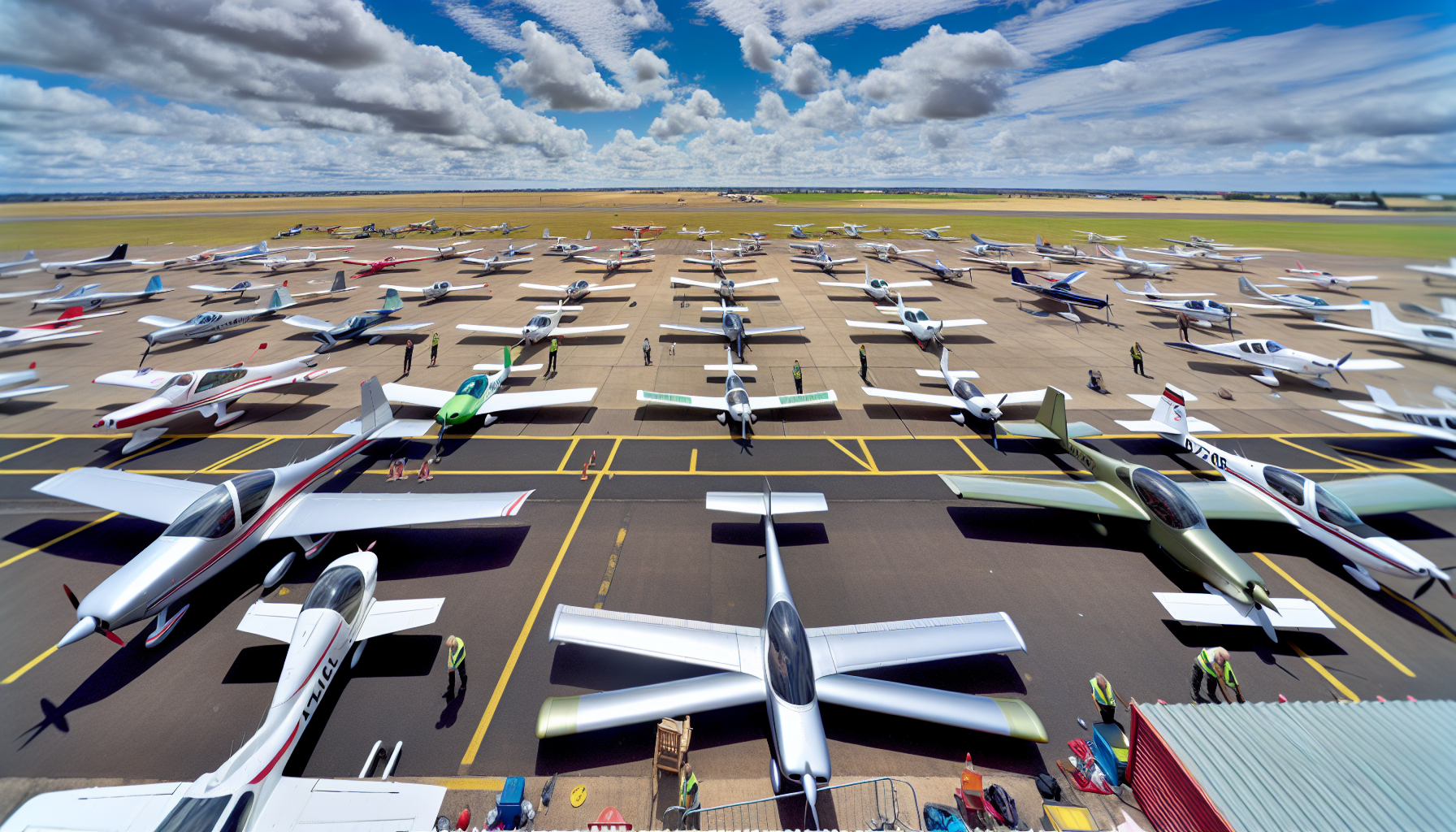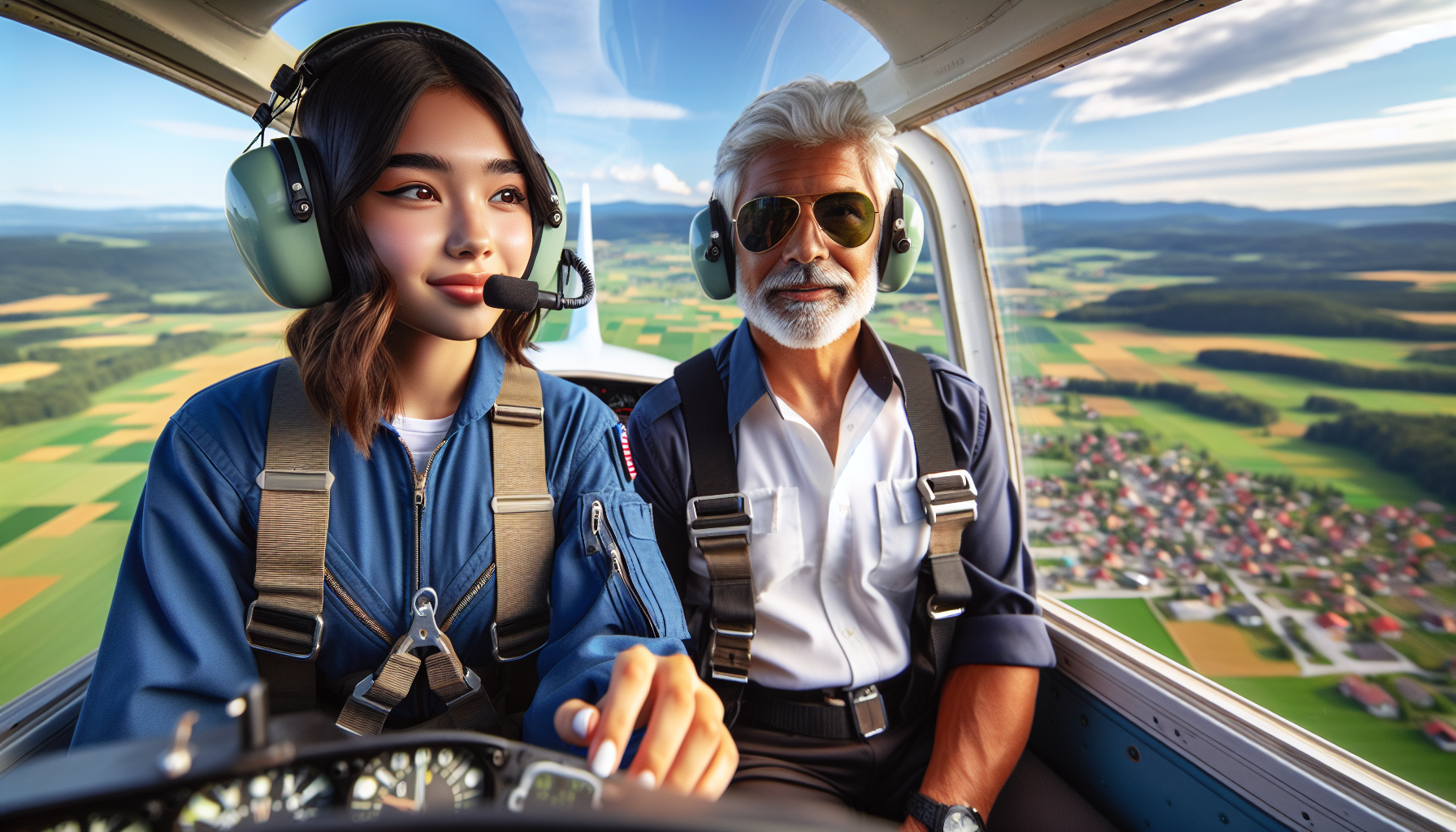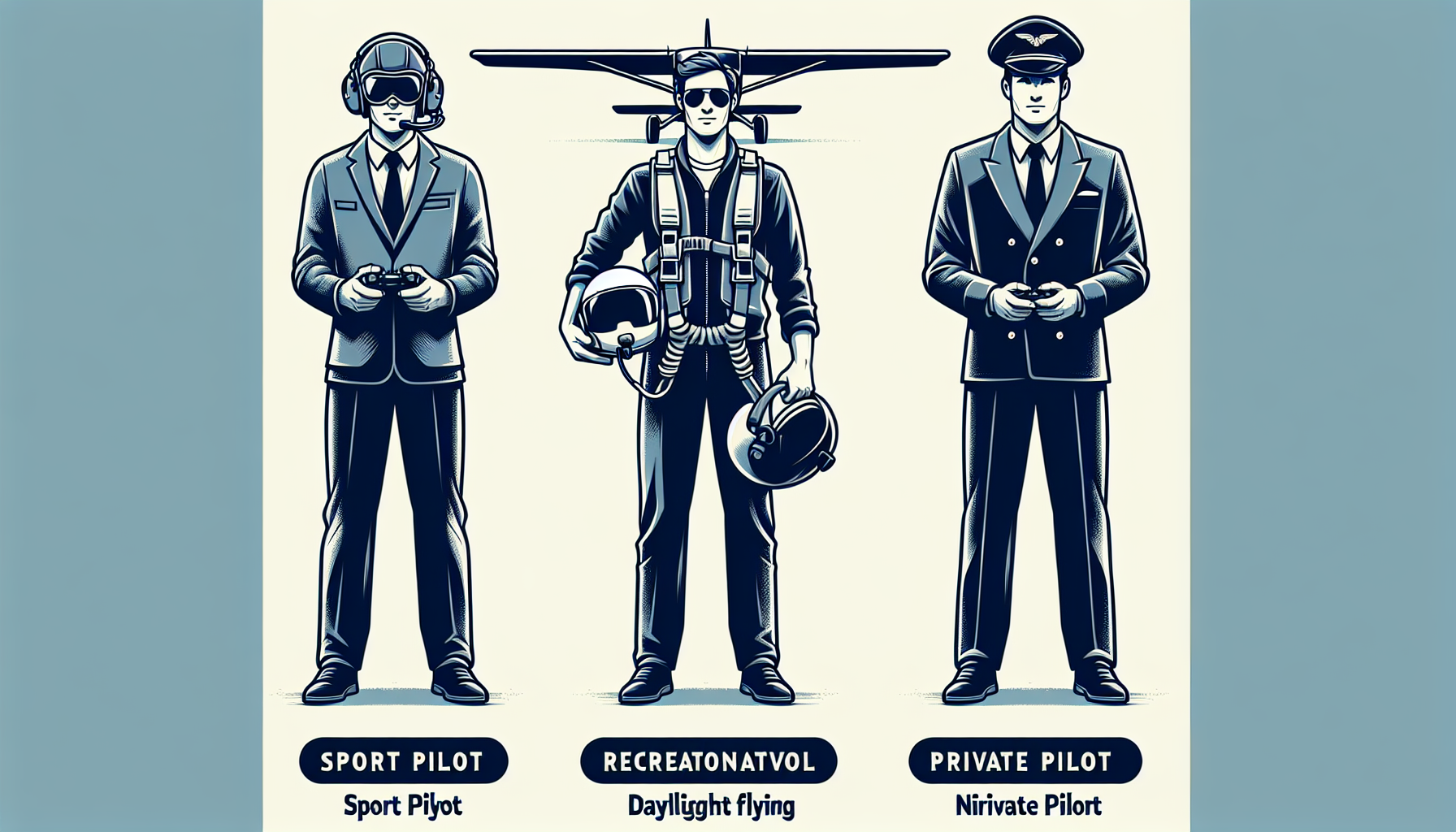Essential Sport Pilot License Requirements
Feb 01, 2024
Dreaming of soaring through the azure skies, unhindered by traffic and congestion on the ground? The freedom of flying your own light sport aircraft can be yours with a sport pilot license. This license allows you to operate light sport aircraft for recreational purposes, offering an unprecedented sense of liberty and adventure. To achieve this dream, it’s essential to understand the sport pilot license requirements and work towards meeting them.
Key Takeaways
-
Understand the Sport Pilot License and its eligibility criteria, including age, language proficiency & possession of valid U.S. driver’s license
-
Familiarize yourself with Light Sport Aircraft categories and flight training/instruction requirements for obtaining a sport pilot license
-
Compare different types of licenses to find one suitable for your flying interests & choose an appropriate flight school based on location, programs offered etc.
Understanding the Sport Pilot License

Holding a sport pilot certificate enables individuals to:
-
Operate light sport aircraft (LSA) with a weight limit under 1,320 pounds
-
Experience the thrill of flying and have their own “magic carpet” in the sky
-
Be part of a new segment of general aviation that specifically targets sport pilots and light sport aircraft
Imagine being part of that exhilarating world!
Just as every magic carpet ride comes with its set of rules, acquiring a sport pilot certificate also involves trade-offs, including restrictions on the selection of aircraft and prohibition of night flying. It’s akin to having a sports car, but being limited to daylight drives and certain types of roads. But isn’t the thrill of the drive worth it?
Eligibility Criteria for a Sport Pilot License
To relish the thrill of flying light sport aircraft, one must meet certain eligibility criteria. These criteria are the prerequisites, or the keys to your magic carpet, required to take flight. These include age, language proficiency, and possession of a valid U.S. driver’s license.
We will now examine each of these criteria in detail.
Age Requirements
Similar to obtaining a driver’s license, certain age requirements must be met for a sport pilot license. The journey towards becoming a sport pilot can commence at 16 years old, the minimum age to start training. To sit for the sport pilot license examination, you must be at least 17 years old. This is akin to the age restrictions for getting behind the wheel of a car, ensuring that applicants have achieved a certain level of maturity and responsibility.
No upper age limit applies for obtaining a sport pilot license. This opens the skies to anyone with the passion and determination to fly, regardless of their age. It’s like saying that it’s never too late to learn to drive. As long as you have the will and the drive, the sky’s the limit!
Language Proficiency
For sport pilots, language proficiency, especially in English, is a significant criterion. It’s like the common language of the road, necessary for effective communication and safety. Just as drivers need to understand traffic signs and signals, pilots need to be able to read, write, and converse in English to navigate the English-speaking aviation environment.
The FAA sets specific criteria for English language proficiency, including:
-
Reading
-
Speaking
-
Writing
-
Comprehension
Think of these as the traffic rules of the sky, essential guidelines to ensure safe navigation and clear communication with air traffic controllers and other pilots.
Valid U.S. Driver's License
A valid U.S. driver’s license, akin to the requirement for driving a car, is needed to obtain a sport pilot license, unless you intend to operate gliders or balloons. The U.S. driver’s license serves as a proof of medical competency, allowing pilots to fly light sport aircraft without obtaining a separate medical certificate. It’s like having a health certificate for driving, attesting to your fitness to operate a vehicle.
However, the suspension or revocation of a U.S. driver’s license can potentially impact your eligibility for a Sport Pilot License. It’s akin to having your driving privileges withdrawn due to traffic violations or other infractions. Hence, maintaining a clean driving record is as essential for flying as it is for driving.
Light Sport Aircraft Categories

A sport pilot certificate allows you to navigate a varied selection of light sport aircraft across assorted categories and classes, and obtaining sport pilot certificates in different categories can expand your flying experience. It’s like having a variety of cars at your disposal, each offering a unique driving experience. Whether you prefer the speed of a sports car or the ruggedness of an SUV, there’s a light sport aircraft to match your flying style.
Certain characteristics define a light sport aircraft:
-
Maximum gross takeoff weight of 1,320 lbs (1,430 lbs for seaplanes)
-
Maximum stall speed of 51 mph / 45 knots CAS
-
Maximum level flight speed of 138 mph / 120 knots CAS
It’s like a compact car, designed for efficiency and ease of operation, perfect for the sport pilot looking for a thrilling yet manageable flying experience.
Flight Training and Instruction

Becoming a sport pilot necessitates undergoing the following:
-
Flight training and instruction
-
Ground school
-
Flight hours
-
Learning from flight instructors
It’s akin to learning to drive, where you need to understand the rules of the road, practice driving, and learn from experienced instructors.
We will now examine each of these elements more thoroughly.
Ground School
Ground school, similar to the classroom component of driver’s education, provides the necessary knowledge base to pass the FAA written exam. It’s where you learn the basics of aerodynamics, just as you would learn the mechanics of a car in driver’s ed.
The ground training curriculum covers a wide range of subjects, including:
-
Student Pilot Certificate Procedures
-
Sport Pilot Endorsements
-
Flight Review
-
Regulations
-
Airspace
-
Weather
-
Navigation
-
Aircraft systems
It typically involves about 40 hours of instruction, akin to the classroom time required for driver’s education.
Flight Hours
Similar to logging driving practice hours for a driver’s license, flight hours must be logged to obtain a sport pilot license. The FAA mandates a minimum of 20 hours of flight time, including both flight instruction and solo flight time.
The process of recording flight hours for sport pilot training is meticulous, just as you would document your driving hours in a logbook. You need to note your pilot-in-command (PIC) time when you are the sole manipulator of the aircraft, much like noting your solo driving time.
Flight Instructors
Flight instructors, akin to driving instructors, play a vital role in your training and preparation for the FAA practical test. They are the ones who guide you through the intricacies of operating a light sport aircraft, just as a driving instructor would guide you through the complexities of driving.
Choosing a flight instructor is an important step in your journey to becoming a sport pilot. You can use resources like the EAA (Experimental Aircraft Association) website to locate a Certified Flight Instructor (CFI) in your area. Just as you would choose a driving instructor based on their experience and teaching style, you should choose a flight instructor based on their qualifications and compatibility with your learning style. Some factors to consider when choosing a flight instructor include:
-
Their level of experience and flight hours
-
Their teaching style and communication skills
-
Their availability and flexibility with scheduling
-
Their knowledge of the specific aircraft you will be flying
-
Their reputation and reviews from other students
Take the time to research and interview potential flight instructors to ensure that you find the best fit for your needs and goals.
Applying for Your Student Pilot Certificate
A student pilot certificate, similar to a learner’s permit, is needed to commence flight training. This certificate is like your admission ticket to the exciting world of flying and serves as a stepping stone towards obtaining your private pilot certificate.
To apply for a student pilot certificate, you need to:
-
Submit a completed application
-
Provide proof of age and being at least 16 years old
-
Have an FAA-designated pilot examiner (DPE) accept your application and conduct practical tests as part of the application process
It’s akin to applying for a learner’s permit, where you need to submit an application and pass a written test.
Medical Certification for Sport Pilots

Meeting certain medical criteria, akin to health standards for driving a car, is required to fly a light sport aircraft. However, most sport pilots are exempt from the necessity of medical certification. They need to possess either a valid U.S. driver’s license or a valid pilot medical certificate.
There are situations where a sport pilot may need to obtain an FAA medical certificate. For example, if they have a medical condition that makes them ineligible to fly under sport pilot regulations, or if they intend to fly under alternative regulations that mandate medical certification, such as the FAA’s Basic Med program. It’s similar to needing a medical exam to drive if you have a medical condition that may affect your driving ability.
Taking the FAA Written Exam and Practical Test
Passing the FAA written exam and practical test is required to become a licensed sport pilot, much like needing to pass a written test and driving test for a driver’s license. The FAA written exam assesses your knowledge of:
-
essential principles
-
concepts
-
procedures
-
regulations
The practical test, also known as the check ride, is a comprehensive assessment conducted by a designated pilot examiner to evaluate your practical application of flying skills and knowledge. It’s like your driving test, where you show your practical driving skills and knowledge of traffic rules.
Cost of Obtaining a Sport Pilot License
Obtaining a sport pilot license, much like learning to drive and getting a driver’s license, also incurs certain expenses. These costs usually range from $5,000 to $10,000 and include the cost of the FAA written exam and the practical test.
Remember, investing in your training to become a sport pilot is like investing in driving lessons - it’s an investment in your safety and the safety of others in the air. It’s the price you pay for the freedom and thrill of flying your own light sport aircraft.
Flight Restrictions and Limitations
Sport pilots, like car drivers, have to adhere to certain flight restrictions and limitations under the light sport aircraft rule to maintain their sport pilot privileges. These include:
-
Flying light sport aircraft
-
Carrying one passenger
-
Operating within the United States
-
Flying during daylight only
Additionally, sport pilots are restricted to operating at altitudes that do not surpass 10,000 feet. It’s like having a speed limit and road restrictions while driving. These rules and restrictions ensure safety in the skies.
Comparing Sport Pilot License to Recreational and Private Pilot Licenses

Different types of pilot licenses exist, similar to various types of driving licenses (learner’s permit, provisional license, full license). The sport pilot license is compared to the recreational and private pilot licenses in terms of passenger limitations, international flight permissions, aircraft, and flight condition flexibility.
Each type of pilot license has its own advantages and is suitable for different flying interests. If you want to fly light sport aircraft for recreational purposes, then a sport pilot license might be the way to go. This type of license limits flying to daylight hours only. A private pilot license may be advantageous if you have an interest in manoeuvring aircraft under various conditions, both during the day and at night. Furthermore, this license enables you to fly a wide variety of planes.
Choosing a Flight School for Sport Pilot Training
Selecting a flight school for sport pilot training parallels choosing a driving school. You need to consider the following factors:
-
The school’s location
-
Available training programs
-
Expertise and credentials of the flight instructors
-
Quality and diversity of the aircraft fleet
-
Comprehensive expenses related to the training
Before enrolling, it’s advisable to inquire about the following:
-
Instructor-to-student ratio
-
Evaluation processes
-
Lesson scheduling
-
Insurance coverage
-
Instructor credentials
-
Student success rate
-
Hourly rates
-
Duration of the training program
It’s similar to asking about class size, instructor’s experience, success rate, and cost when choosing a driving school.
Summary
This guide has taken you on a journey through the process of becoming a sport pilot, from understanding the license to choosing a flight school. Just as driving gives you the freedom to move on the ground, flying gives you the freedom to explore the skies. The sport pilot license is your key to this exciting world of flying.
Frequently Asked Questions
What are the requirements for sport pilot?
To qualify for a Sport Pilot license, you need to be at least 17 years old (or 16 if applying for glider or balloon operations), fluent in English, and hold a current US driver's license or third class medical certificate. Additionally, these licenses never expire and are valid for life.
Can I fly a Cessna 172 with a sport pilot license?
No, you cannot fly a Cessna 172 with a sport pilot license as they are not considered light sport aircraft. However, a sport pilot license can allow you to fly many types of other light sport aircraft.
How much does it cost to get a sport pilot's license?
Obtaining a sport pilot license typically costs between $6,000 and $10,000, while obtaining a private pilot license typically costs between $9,000 and $17,000.
What is a sport pilot license?
A sport pilot license is an easier and more affordable way to fly for recreational purposes than a private pilot license. It allows pilots to operate light-sport aircraft with medical requirements met by either a third class medical certificate or a U.S. driver's license.
What are the differences between a sport pilot license and a private pilot license?
The primary difference between a sport pilot license and a private pilot license is the level of flexibility they offer; a sport pilot license has restrictions on the number of passengers, international flights, and types of aircraft whereas a private pilot license is more unrestricted.
